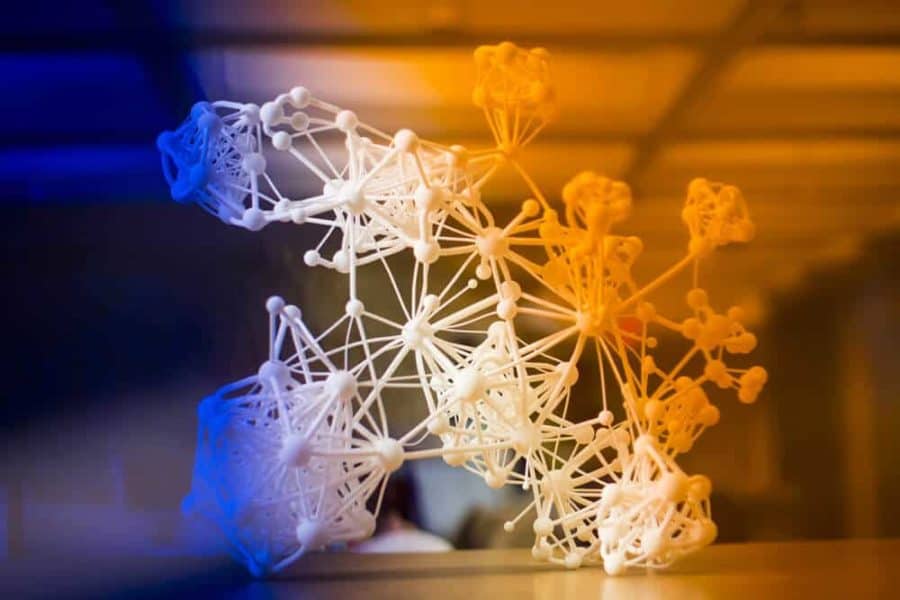Our world is full of networks. Our social networks are abstract, but others, such as the circuitry in our brains or the underground networks of fungi that trees use to communicate, have to exist physically.
Physical networks, which are restricted by the laws of three-dimensional space, captured the interest of Nima Dehmamy, a postdoctoral researcher at Northeastern’s Center for Complex Network Research.
“If you’re on Twitter, you can have as many followers as you like,” said Dehmamy. “But if you’re a neuron in the brain, every connection that you get occupies some space. The more connections you have, the more space you will require.”
Dehmamy and Soodabeh Milanlouei, a doctoral student in industrial engineering, built a physics-based computer model to find the most efficient layout for those networks. They considered factors such as the thickness of the connections, the size of the nodes being connected, and whether those nodes could be moved around.
A simple network tends to resemble an old ball-and-stick molecule set, with large nodes linked by small, relatively straight connections. There is plenty of space for connections to pass by each other without interfering. But as the connections increase in both size and number, they start to get in each other’s way. The links have to bend and push against each other until the whole network begins to look more like a pile of spaghetti.
“It makes for an object that’s occupying the full volume that’s available to it,” Dehmamy said.
The researchers found that this change begins to affect the way the network responds to physical stress. Simpler networks respond as an irregular solid might: Stress spreads unevenly. According to the model created by Dehmamy and Milanlouei, if a network of this sort is pushed or dropped, whether it breaks or bounces will depend on what side hits the floor.
As a network becomes more complicated, however, it behaves increasingly as a gel would.
“When we squeeze this object from the sides, it responds in a way that is more like a fluid or a gel, essentially. The components just wiggle around and move over each other,” Dehmamy said. “It absorbs stress and it responds the same way when the stress is applied in any direction.”
Understanding the physics of these theoretical networks can help researchers to study real-world networks such as the human brain, Dehmamy said. Albert-László Barabási, who directs the Center for Complex Network Research and contributed to the paper published this week in Nature, agrees.
“Our work offers a new tool set to study networks whose links and nodes are physical objects that cannot cross, from brains to computer wiring,” Barabási said.
The research also lends itself to designing 3D-printable models of different networks. While 3D printing technology has not yet advanced to the point where researchers can print something as complex as a working hard drive or a functional robot brain, printed models provide researchers a new way to study the layout and connections of a network.
“Viewing networks in their full physicality, being able to walk around them and understand the details of their wiring, offers a completely different, very personal perspective on complex systems,” Barabási said.


